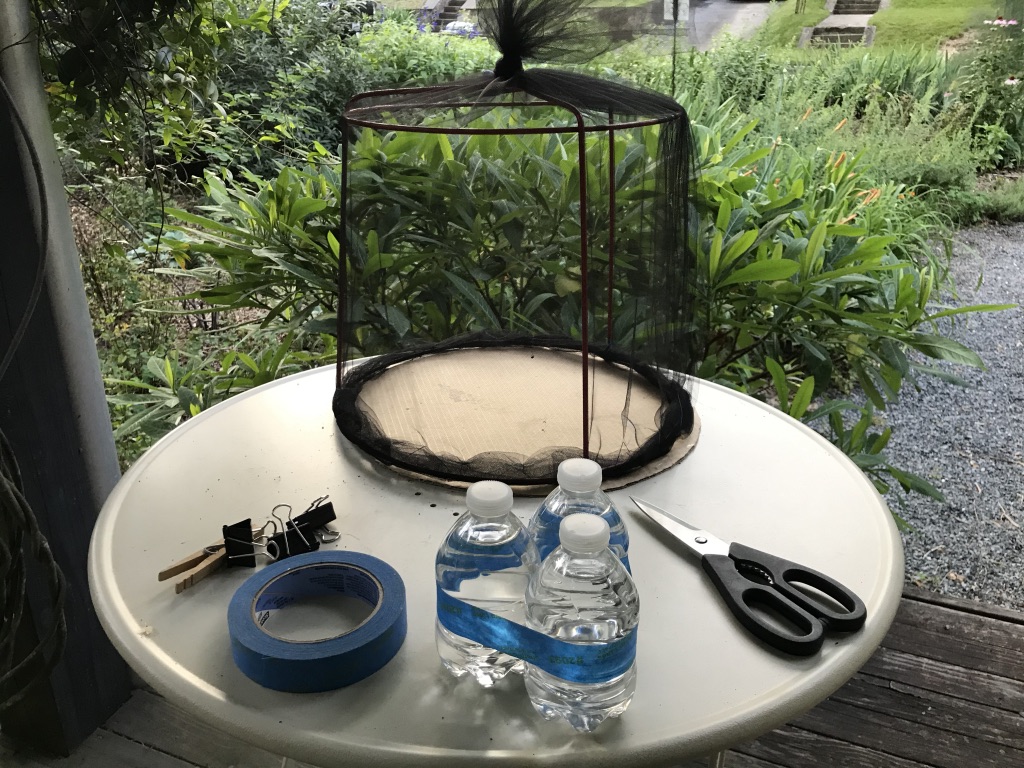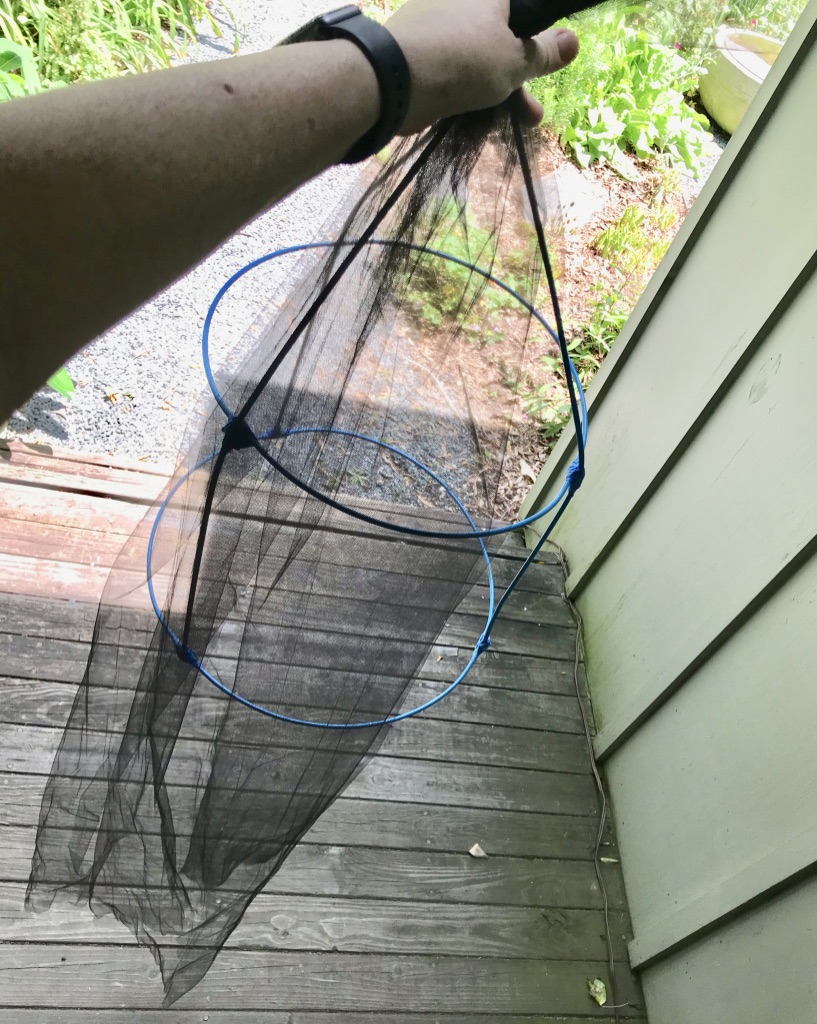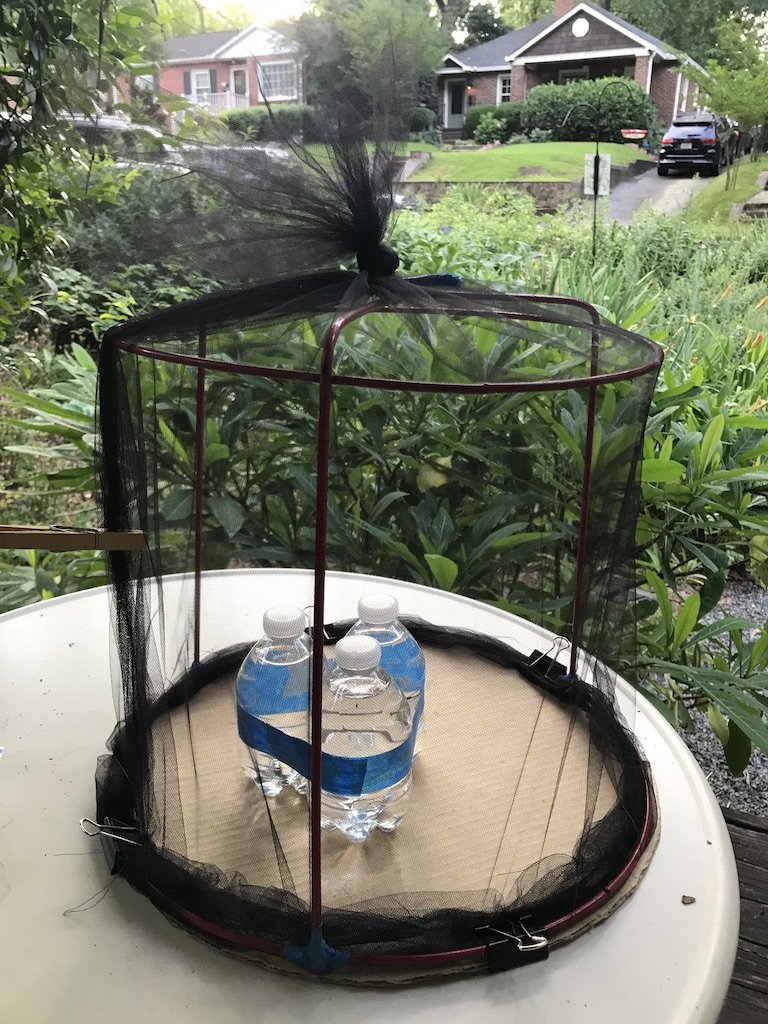See also: Food and Water

Tomato cages make great caterpillar homes. With a few modifications, you have a nice sturdy enclosure that’s easy to clean.

You can raise caterpillars in almost any container, as long as they aren’t crowded and can’t get out. If that’s all you can manage – go for it! The key to container raising: caterpillars don’t need airholes to survive. If you clean out the container every day, they will be fine.
But a net enclosure is more fun for caterpillar-watching.
To make a caterpillar home out of a tomato cage, turn the cage upside down and use bolt cutters to trim back the anchor wires that stick up. Bend what’s left to make a roof.

You can make them short, for a flat roof.

Or you can leave them a bit longer, for something more fanciful.

If you want a small enclosure, cut the top ring off the tomato cage.
Larger enclosures are best for Monarchs, because milkweed stems tend to be tall. Most other caterpillars do just as well in small enclosures.

Wrap the cut edges in tape, so they won’t prick anyone’s fingers.
Fabric (Tulle)

Tie a knot at the top of a piece of tulle, and then unroll the fabric until it dangles three or four inches past the bottom of the enclosure. That part will get rolled up around the bottom to create a barrier, so your caterpillars don’t escape.

Turn the cage upside down again, and pull the tulle up around the sides. Make sure the open edges overlap.
Roll the tulle loosely at the bottom, and use a needle and thread to sew it into place. Big, loose stitches work best. Rolled or sewed too tight, the fabric won’t bunch up enough to make an effective barrier.

Cut a circle of cardboard that just fits the bottom of the enclosure. You can use binder clips or clothespins to fasten it on (having a removable bottom makes it much easier to dump the poop!) On the side, use a clip or clothespin to hold the open ends together. You can unclip it when you need to reach inside the enclosure.